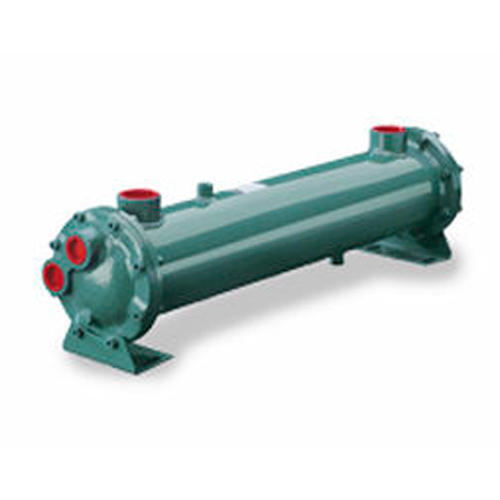Hydraulic Heat Exchangers:
Overview:
Hydraulic heat exchangers systems are designed using the energy loss method. Such systems cost less to build and are more responsive because system energy is immediately available. But because of the inherent poor efficiency of these systems, energy lost as heat can exceed that of the mechanical power produced by the system. For example, even well-designed electro hydraulic servo valve or proportional valve systems may convert 60% to 80% of input horsepower to heat. Well-designed non-servo systems can produce heat losses of only 20% to 30%.Some hydraulic system heat is desirable to bring fluid up to operating temperature. Cold hydraulic oil has a higher viscosity than warm oil. So maintaining an operating temperature of 100° F would cause sluggish operation and excessive pressure drop in a system designed to operate at 140° F.
Process:
Hydraulic heat exchangers are always recommended to assemble in parallel with the exchangers a by-pass valve to avoid extreme counter-pressures, particularly when the machine is started with cold oil. On the contrary, it is not useful to use a check valve as by-pass to protect the exchanger from pressure’s peaks, since the inertia of the valve itself is too high in comparison with the speed of the pressure waves that occur into the oleo hydraulic systems. The flow rates shown in the tables are the ones recommended for the exchanger proper working. The efficiency curves show the specific exchange capacity in kcal/ h°C or in kW/°C according to the different oil rates. To calculate the heat quantity the different exchangers are able to dissipate it is enough to multiply such capacity by the difference between the requested oil temperature and the summer room temperature.
Image:

Features:
- 25 ml to 100 litres. size
- Pressures up to 350 bar (4500 psi) & temperatures up to 500°C
- Available in different Materials of Construction (MOC) like SS-316, SS-316L, hostelry B/C, model, Nickel, Titanium, Tantalum, Zirconium
- Ex-proof / CE / PED / ASME certified systems on request
- Fully automated PC controlled high pressure system / pilot plant to continuously monitor, control & record various parameters.
- High impact resistance
- Corrosion resistant
- Abrasion resistance
- High tensile strength.
Advantages:
- Low investment, operation and maintenance costs.
- Highly efficient heat transfer (K- values on average 3-5 times higher than in case of bare-tube heat exchangers).
- Asymmetrical flow gap available for the most cost effective solution.
- Use of smallest temperature difference </= 1°C
- Up to 75% less space required.
- Self-cleaning effect due to highly turbulent flow behaviour
- Future additional capacity is possible by fitting extra heat transfer plates
- Double gasket with leak groove gives high safety with regards to media mixing.
- Easy to open/clean
- Low operating weight/ low liquid content.

